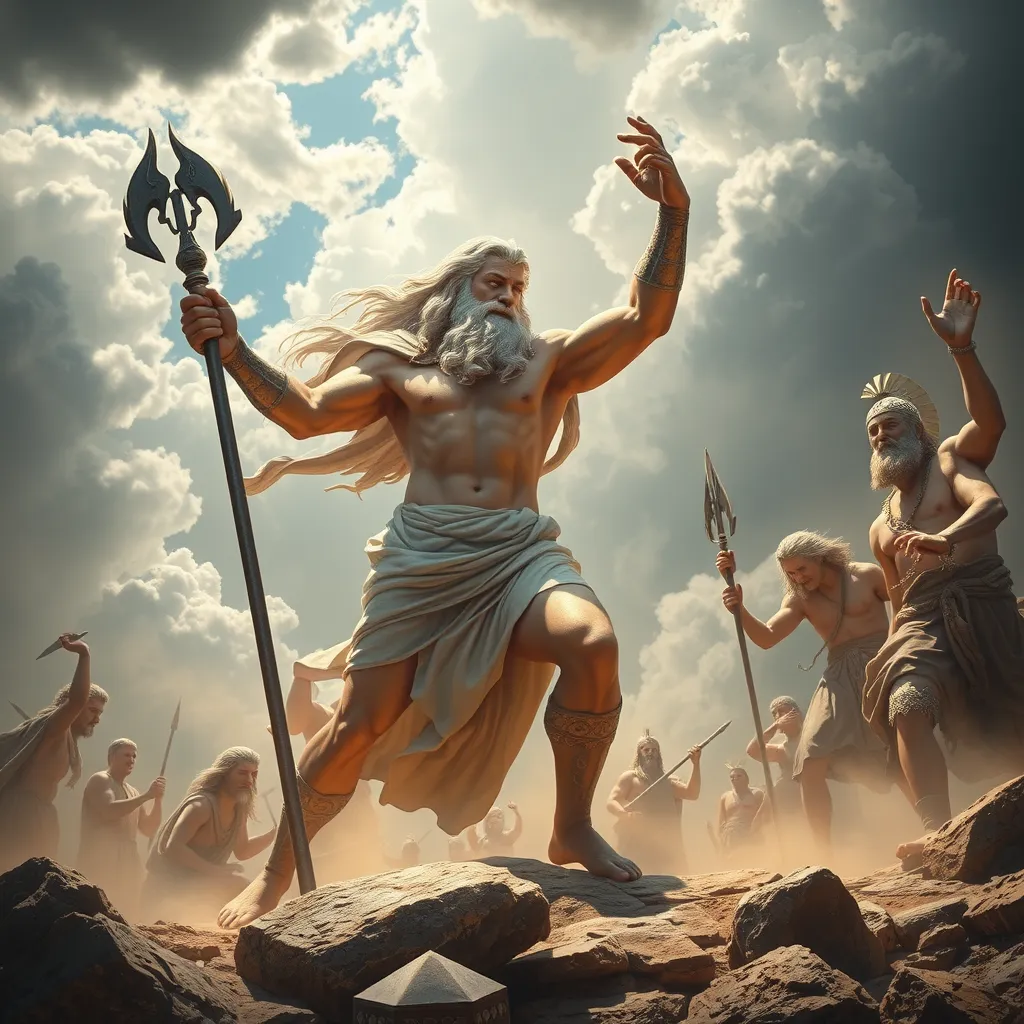Zeus and the Giants: The Gigantomachy Explained
I. Introduction
The Gigantomachy is a significant myth in Greek mythology that describes the epic battle between the Giants and the Olympian gods. This conflict is not just a simple tale of good versus evil; it symbolizes the struggle for order against chaos and the establishment of divine authority. Zeus, the king of the gods, plays a central role in this narrative, representing supremacy, justice, and leadership within the pantheon.
This article aims to explore the myth of the Gigantomachy, delving into its origins, key players, the battle itself, and its lasting implications in both ancient and modern contexts.
II. The Origins of the Giants
The Giants in Greek mythology are often depicted as towering beings with immense strength, born from the earth itself. Their creation is attributed to the primordial entities Gaia (Earth) and Uranus (Sky). According to myth, after Uranus was overthrown by his son Cronus, Gaia, seeking revenge for her suffering, bore the Giants to challenge the Olympian gods.
The symbolism of the Giants is multifaceted:
- Representations of primal chaos and untamed nature.
- Embodiments of the earth’s fury, signifying the connection between humanity and the natural world.
- Symbols of rebellion against divine authority, highlighting the tension between mortals and gods.
III. The Lead-Up to the Gigantomachy
To understand the Gigantomachy, one must consider the context of the Titanomachy, the earlier war between the Titans and the Olympian gods. After the Titans were defeated and imprisoned, Gaia, feeling discontented, sought to create the Giants as a means to reclaim power. The Giants held grievances against the Olympians, believing that they were unjustly denied their rightful place in the cosmos.
Gaia’s motivations were complex; she desired to restore balance and challenge the authority of Zeus and his kin, viewing the Olympians as usurpers of the primordial order.
IV. The Major Players in the Gigantomachy
The Gigantomachy features a cast of characters that encapsulate the conflict between the forces of chaos and order:
A. Zeus
Zeus, the king of the gods, is central to the Gigantomachy. Known for his thunderbolts and authoritative presence, he leads the Olympians against the Giants. His significance extends beyond mere power; he embodies justice and the establishment of order.
B. The Giants
The Giants, each possessing unique characteristics and powers, include notable figures such as:
- Alcyoneus: A Giant associated with the land of Colchis, often depicted as invulnerable.
- Enceladus: A Giant who is believed to have been buried under Mount Etna after the battle.
- Porphyrion: Known for his incredible strength, he was a prominent leader among the Giants.
C. Other Olympian Gods
Other gods played critical roles in the battle, including:
- Athena: Representing wisdom and warfare, she provided strategic insights.
- Heracles: A demigod known for his strength and bravery, he was instrumental in the defeat of the Giants.
- Ares: The god of war, who reveled in the chaos of battle.
V. The Battle of the Gigantomachy
The Gigantomachy was a fierce and chaotic battle, characterized by dramatic confrontations and strategic maneuvers. The conflict unfolded as the Giants, fueled by their grievances, launched an assault against Olympus, leading to a titanic clash between the two sides.
Key events included:
- The Giants attacking the heavens with massive stones and weapons.
- Zeus unleashing his thunderbolts to strike down the Giants.
- The intervention of Heracles, who played a pivotal role by using his bow and arrows to assist the gods.
The struggle between the gods and the Giants represents a profound symbolic meaning: it illustrates the transition from chaotic forces of nature to established order and civilization.
VI. Consequences of the Gigantomachy
The aftermath of the Gigantomachy had significant consequences for both the Giants and the Olympian gods. The defeat of the Giants led to their imprisonment beneath the earth, often associated with natural disasters and the tumultuous aspects of the natural world.
For the Olympians, their victory solidified their authority, allowing them to rule over mortals and maintain order in the cosmos. This battle established a clear demarcation between the divine and the chaotic forces of nature, reinforcing the cultural significance of the gods in ancient Greek society.
Moreover, the Gigantomachy influenced various aspects of human civilization, such as:
- The establishment of rituals and festivals in honor of the gods.
- Artistic representations that celebrated the triumph of order over chaos.
- Literary works that explored themes of conflict and resolution in human experience.
VII. Representations in Art and Literature
The Gigantomachy has been a popular subject in ancient art and literature, serving as a powerful narrative to convey moral and cultural values. Depictions of the battle can be found in various forms:
- Vase paintings illustrating dynamic scenes of combat between gods and Giants.
- Reliefs on temples, such as the Pergamon Altar, showcasing the struggle as a celebration of divine triumph.
- References in classical literature, including works by authors like Apollodorus and Hesiod, which recount the events and significance of the battle.
The analysis of these representations reveals how the Gigantomachy reflected societal values, emphasizing the importance of order, justice, and the role of the divine in human affairs.
VIII. Conclusion
In summary, the Gigantomachy serves as a crucial myth in Greek mythology, illustrating the epic struggle between the Olympian gods and the Giants. The narrative highlights key themes of order versus chaos, the nature of power, and the role of the divine in the world.
The enduring legacy of the Gigantomachy can be seen in its influence on art, literature, and cultural practices, showcasing the importance of these myths in shaping human understanding of the cosmos and their place within it. Zeus, as a central figure in this story, embodies the qualities that are revered in Greek culture—leadership, justice, and the maintenance of order against the forces of chaos.




